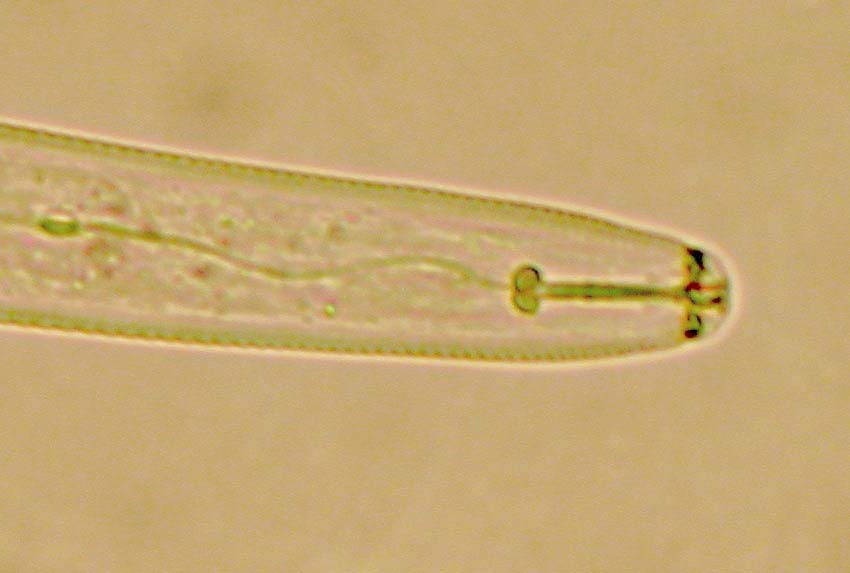In my previous post, I highlighted possibly strategies that pathogens could deploy to deal with a host that throws the chemical kitchen sink. In a nutshell, these strategies all centered around the idea that the host creates a toxic environment that in principle is inhospitable to microbes. From this, it would appear that pathogens must have acquired systems to deal with toxins. While this may certainly be true, relatively few such mechanisms are known. Why would this be? One of the answers is; pathogens prevent hosts from turning into a chemical waste site!
Science has contributed significantly to our understanding of microbial pathogens. Although we can debate at length about what would constitute the most significant advance in the field of microbial pathogenesis, for me, there are a few that stand out. One of these discoveries was that some bacteria build an intricate molecular structure that resembles a needle and sits on the cell exterior (Reviewed in Galán & Collmer, 1999). Transmission Electron Microscopy of structures isolated from gram-negative bacteria revealed the presence of a needle-like apparatus for which its function was initially unknown.

Figure 1 Transmission Electron Microscope Image of Type 3 Secretion systems (T3S). Source
Subsequent studies have firmly demonstrated that when you remove the genes that these structures require for their assembly from pathogens, they become much less able to incite disease (Alfano et al., 1996). The loss of virulence phenotype applies to both animal and plant pathogens, suggesting that these needle-like structures carry out a fundamental role in pathogenesis.
Indeed elegant studies have shown that these 'nanotubes' help deliver proteins into host cells by acting like a real molecular needle that can puncture the host cell membrane and injects proteins into the cell interior. From this, it became evident that pathogens have a real stake in manipulating the host (Alfano et al., 1996; Hensel et al., 1996). Afterall, microbes maintain a substantial gene repertoire required for the production of these elaborate structures, which must come with an immense cost. The benefit, therefore, must be significant such that it can offset the costs. The benefit, as it turns out, is the ability to suppress host immunity and prevent the creation of those toxic environments that are detrimental to the pathogen. In fact, more evidence is emerging that pathogens (and other microbes that can interact with hosts) have found ways to increase the flux of nutrients to infection sites, creating an even more favorable environment to grow and reproduce.
At this stage, it is appropriate for anyone to question whether the occurrence of molecular machines also applies to eukaryote pathogens. The answer to this question is yes! Nearly all pathogenic organisms studied to date appear to form structures that facilitate interaction with their host(s). As you can imagine, however, these organelles (or in some cases, organs!) are wildly diverse, reflecting their independent emergence and evolution across lineages. For clarity, I present an overview below.

The oomycete pathogen Hyaloperonospora-parasitica infecting Arabidopsis thaliana. you can see clear filamentous growth (dark blue) between cells and protrusions (little blobs) pushing into cells. The protrusions (called Haustoria) are thought to be functionally equivalent to the Type III secretion system. Source

Figure 3. Head of a Nematode containing a needle like structure, called a stylet. The stylet is used to puncture plant cells and feed. It is now also believed that the stylet is used to inject proteins. Source
CONCLUSION
So, what is the take-home message here? The crucial piece of information to remember here is that pathogens and pests (no matter which ones you talk about) have found some way to access and inject its molecules into the host cell. In evolutionary terms, pathogens and parasites have found it easier to prevent a chemical onslaught, rather than face it, during an invasion.
REFERENCES:
Alfano JR, Bauer DW, Milos TM, Collmer A.Mol Microbiol. 1996 Feb;19(4):715-28. PMID: 8820642
Galán JE, Collmer A.Science. 1999 May 21;284(5418):1322-8. Review. PMID: 10334981
Shea JE, Hensel M, Gleeson C, Holden DW.Proc Natl Acad Sci U S A. 1996 Mar 19;93(6):2593-7. PMID: 8637919
For further reading on this topic, I would recommend the following posts:
/@huitemae/salads-under-siege-the-plant-running-game-explained-episode-2
/@huitemae/salads-under-siege-the-plant-running-game-explained-episode-1
I hope you will find these pieces interesting. Your vote and follow help me open up the exciting world of plant biology and pathology to you.
Thank you @foundation for this fantastic SteemSTEM gif

